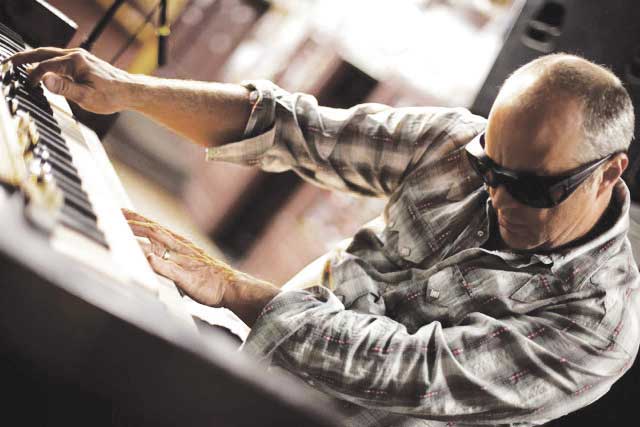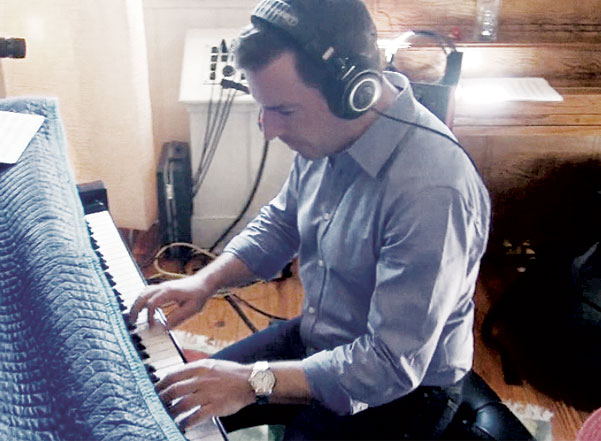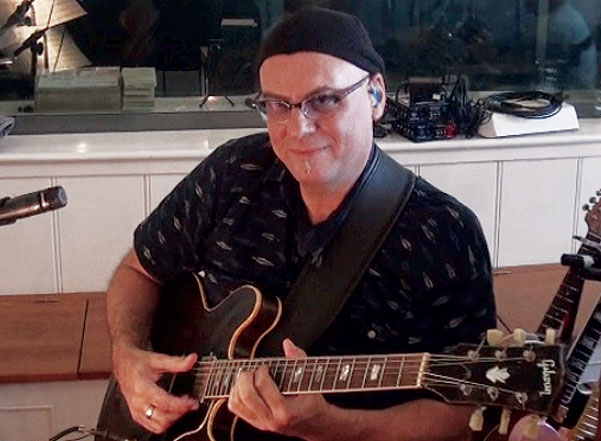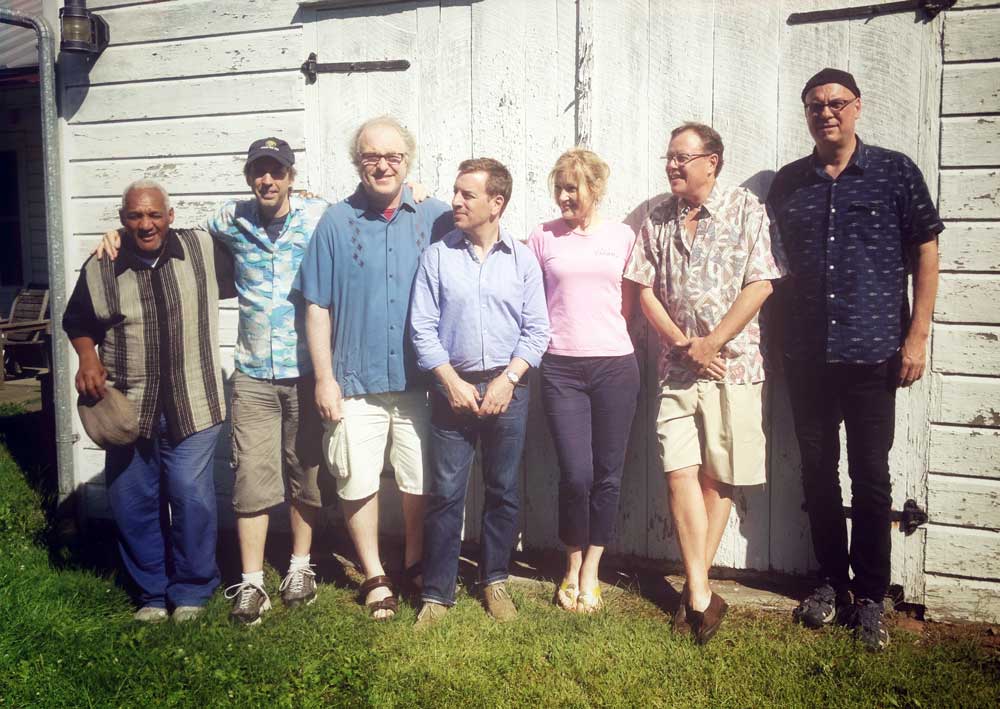Trumpeter, Vocalist, Pianist, Composer, Bandleader
Bob Merrill’s Cheerin’ Up the Universe
Happiness has never been the hippest emotion for a contemporary jazz musician to trade in. Modern players tend to be drawn to darker emotions to prove their depth and individuality.
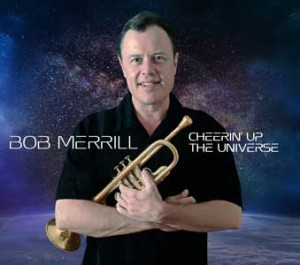 Trumpeter-singer Bob Merrill, who at this stage of his wonderfully varied career doesn’t have to prove his seriousness of intentions to anyone, rejects the notion that “happy” is uncool. For him, in fact, there’s nothing better than expressions of joy. And if his song choices on Cheerin’ Up the Universe don’t leave you “Feelin’ Groovy,” too, well, all you need to do is concentrate on the level of artistry on display.
Trumpeter-singer Bob Merrill, who at this stage of his wonderfully varied career doesn’t have to prove his seriousness of intentions to anyone, rejects the notion that “happy” is uncool. For him, in fact, there’s nothing better than expressions of joy. And if his song choices on Cheerin’ Up the Universe don’t leave you “Feelin’ Groovy,” too, well, all you need to do is concentrate on the level of artistry on display.
In the great tradition of trumpeter-singers, going back to Louis Armstrong, Dizzy Gillespie, Chet Baker, and Louis Prima, Merrill is both a carefree entertainer who wants to lift up his audience and a serious artist who pays the deepest respect to jazz tradition with his mastery of forms.
On previous albums, the New York-based artist mined the jazz mainstream, sometimes with a stylish Rat Pack-era sound, sometimes with a deeper blend of late swing and hard bop—and always, says Accurate Records honcho Russ Gershon, who has known Merrill since they were classmates at Harvard, with real jazz and real blues feeling. “He has a passionate attachment to the real thing,” said Gershon, leader of Either/Orchestra, who lends his saxophone skills to the album.
Backed by such one-of-a-kind guest players as trombone great Roswell Rudd and keyboardist John Medeski, Merrill indulges himself—and anyone who has grown up loving the likes of James Taylor, Steely Dan, Burt Bacharach, and the Beatles—by applying his personal touch to a selection of pop hits that in spirit and title promote happiness. For a little icing on the cake, he covers Pharrell’s inescapable “Happy,” with the lyrical bassist Nicki Parrott harmonizing and a touch of Lee Morgan’s infectious “Sidewinder” informing the bridge.
“Am I overdoing it?” Merrill asks with a laugh. “This song is grin-inducing. Even the most cynical can’t listen to it and not feel good.”
You might suspect that someone who ranges as wide as he does stylistically has been exposed to a world of influences. In Merrill’s case, it’s been more a matter of universes colliding. During his fascinating life, he has been mentored by modern jazz legend Jaki Byard, in whose Apollo Stompers big band he played, and fabled swing pianist Joe Bushkin, whose daughter he married and created four musical sons.
A New Yorker through and through, Merrill was born in Manhattan in 1958 and grew up in the Upper East Side building where Benny Goodman lived. The royal presence of the King of Swing, up in the penthouse, incited young Bob’s interest in jazz after he had mastered the Mozart minuets he studied in grade school. When he first put Goodman’s “Sing, Sing, Sing” on the record player, he says, “I felt a joy I had never known.”
From then on, Merrill was hooked on jazz. After his head was turned by Doc Severinsen’s trumpet playing during a Tonight Show taping his father took him to, he devoted himself to the horn. He took lessons and played gigs with local trumpet guru Felix Sangenito and also studied with William Vacchiano, first trumpet chair at the New York Philharmonic.
While attending Phillips Academy in Andover, Massachusetts, he jammed and woodshedded with saxophonist Thomas Chapin, who would become a leading figure in cutting-edge jazz until his death from leukemia. Accepted at Harvard, Merrill deferred for a year to study jazz at the New England Conservatory of Music, where his teachers included George Russell and Jaki Byard. He formed a group with drummer George Schuller, son of the late Gunther Schuller, then president of NEC.
At Harvard, Merrill was something of a Renaissance man, working as a teaching fellow in a sociology course taught by Robert Coles and participating in Harvard Jazz Band director Tom Everett’s “Seminars in Jazz” course. He arranged for lecturing artists like Lee Konitz and Warne Marsh to play concerts at the Hasty Pudding Club, where Merrill led the house band. And have we mentioned how his lessons with bebop legend and character for all seasons Red Rodney eased his transition from very good horn player to first-rate pro?
Gershon recalls spending hours in Merrill’s room at Harvard during freshman year playing tracks from Ornette Coleman’s opus, Science Fiction, over and over. “We were two of the only hard-core jazz guys around. It’s great that we found each other.”
Merrill began singing, he says, when he played wedding gigs and discovered that attractive women on the dance floor turned to hear what someone on stage was singing more than they ever turned to hear what someone was playing. His relaxed vocals add an important dimension to his art. He modestly says that his understated style is a concession to his vocal limitations. But with his Mel Tormé-influenced smoothness and Kurt Elling-like articulation, he is an appealing and distinctive interpreter of the Great American Songbook.
Around 1982, Bob’s days in Harvard Square came to an end when his deal with the Hasty Pudding Club was not renewed. Merrill switched streams and moved back to New York, where he went to work at the New York Post as a “Page Six” nightlife and gossip columnist—a job that led to a seven-year relationship with actress and singer Judy Carne, first co-writing her memoir and then as musical director of her nightclub act.
In 1986, Bob teamed up with an old friend from NEC days, John Van Eps, a vibraphonist and arranger whose grandfather George Van Eps had been a guitarist with Benny Goodman and was noted as the inventor of the seven-string guitar. They purchased a Synclavier and formed Hip Pocket Recording on West 20th Street, creating music for film and TV, and hosting artists such as Sting and Art Garfunkel. The main live room had great acoustics, and Bob laughingly recalls learning a valuable production lesson, as legendary engineer Gary Katz arrived one day with Donald Fagen and the two spent hours hitting a snare drum in every part of the space in pursuit of the perfect sound.
After marrying Christina Bushkin in 1991, Merrill coaxed her father out of retirement. One of their first gigs was a memorable run at Tavern on the Green in Central Park with a group featuring bass immortal Milt Hinton, who credited Bushkin for bringing him to New York in the early ’50s for an extended run at the Embers with Jo Jones. Merrill produced CD reissues of Joe Bushkin’s classic LPs, and they played the jazz festival circuit until Bushkin’s death in 2004.
All that experience doesn’t get lost in an artist’s résumé. It colors his work for the long haul. Which means that as lightweight as a song may be—and they don’t get much lighter than Simon and Garfunkel’s “59th Street Bridge Song (Feelin’ Groovy)”—you can count on Merrill finding hidden depths in it. His bass ’n brushes version features Nicki Parrott’s vocal harmonies.
Cheerin’ Up the Universe, the original title tune of which won’t settle for merely lifting people’s moods on earth, boasts several out-of-left-field strokes that Merrill performs as if they were second nature. Donald Fagen’s “I.G.Y.” (to which he added the subtitle “What a Beautiful World,” because that’s what the composer forecasts on it) differs from the famed original version by deleting the traditional shuffle groove and adding improvised solos.
Stevie Wonder’s “Overjoyed,” an exercise in gorgeous chord changes that go up, up, up to an emotional climax, is “the closest thing to ‘smooth jazz’ as I’m ever gonna get,” says Merrill. And the Traffic instrumental, “Glad,” which boasts a piano lick Merrill says he learned in high school, splits the difference between Santana, Spinal Tap, and Sun Ra with its muted Latin feel and spaced-out, stretched-out jazz coda. John Medeski, best known for his work with Medeski Martin & Wood, takes full advantage of the opportunity to indulge his inner Cecil Taylor. Former Steely Dan guitarist Drew Zingg, whom Merrill has known since grade school, weighs in with a burning solo that toys with Carlos Santana’s signature sound even as it veers into more of a fusion vein.
“Someone said a track that long won’t get airplay, but how can you not play the coda?” says Merrill. Spoken like a true fan.
Merrill couldn’t resist updating Randy Newman’s facetious bomb-dropping favorite, “Political Science,” by plugging the Taliban into the lyric. John Lennon’s “Imagine” is nicely contemporized via singer-pianist Dena DeRose’s arrangement. Merrill goes to school on Al Cohn and Zoot Sims’s swinging version of the Burt Bacharach-Hal David favorite, “What the World Needs Now.” And dig the passing chords on James Taylor’s “Secret o’ Life.”
If there’s one song on the album that is not after instant grins, it’s “Somewhere,” Leonard Bernstein’s hopeful but heartbreaking ballad from West Side Story. “It’s one of those songs that gets to you every single time you hear it,” says Merrill. He diversifies the emotion on it via Joe Zawinul’s arrangement for Cannonball Adderley, which is rich in chord substitutions. The song brings back memories for Merrill of Bernstein’s Young People’s Concerts with the New York Philharmonic, which he attended in person as a child.
When he attends such classy events now, it’s worth pointing out, he does so in Benny Goodman’s tuxedo. He bought it at an auction for the opening bid of $500 (no one else, shame on them, was interested) and it’s not just a keepsake. It fits perfectly and he wears it a lot. A better tribute to that moody artist in the penthouse would be hard to imagine. Ultimately, though, wearing the tux just makes Merrill happy. Pharrell, among others, would be proud.
CRITICAL ACCLAIM FOR CHEERIN' UP THE UNIVERSE
“Cheerin’ Up the Universe is a tunefest of the first order… A positive, affirming musical experience… Merrill assembled an impressive band to translate his feelings about the music to the listener and uses crackling fresh arrangements to do so.…His singing is infectious and his trumpet playing is top notch.… Merrill accomplishes all with a smile on his face, and obviously, in his heart.”
– C. Michael Bailey for AllAboutJazz.com
“Merrill assembled a team of heavy hitters for this wide-ranging project… The big treat here is Merrill’s savvy lyric update of the politically charged ‘Compared To What’… his rather smooth vocals take on an extra bite in this update of the Jazz classic.”
– Ken Franckling Jazz Notes
“An album of smiles… sweet with trumpet work… a relentless, exuberantly positive album… joyful pieces with strong rhythms that will appeal to others on alien planets…this jazz vocal album of popular hits will have us depart with smiles.”
– Dr. Debra Jan Bibel for Amazon.com
In Arnaldo DeSouteiro’s 37th annual Jazz Station Awards for the “Best of 2015,” Cheerin’ Up the Universe received top 10 honors for Bob Merrill in both the Flugelhorn and Male Singer categories.
Video: On the Making of Cheerin’ Up the Universe
Photos from the Cheerin’ Up the Universe Sessions

